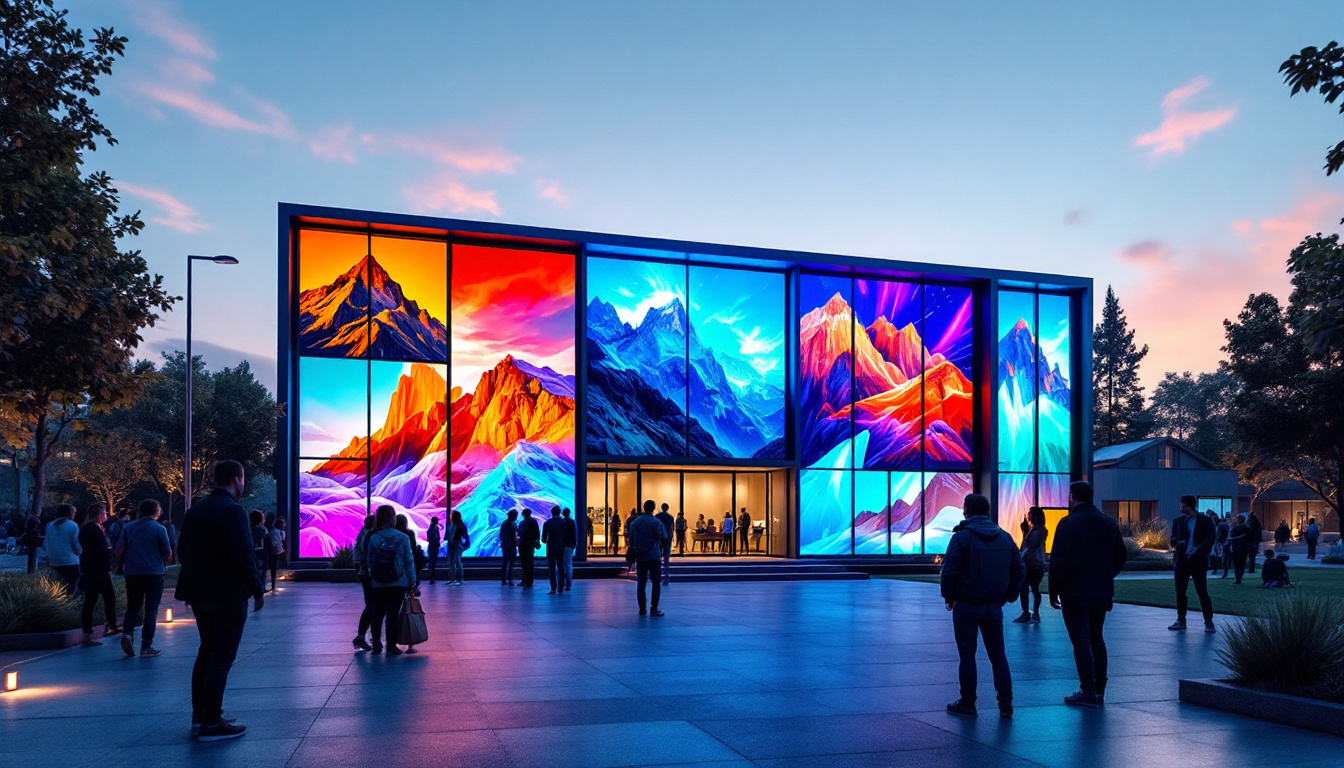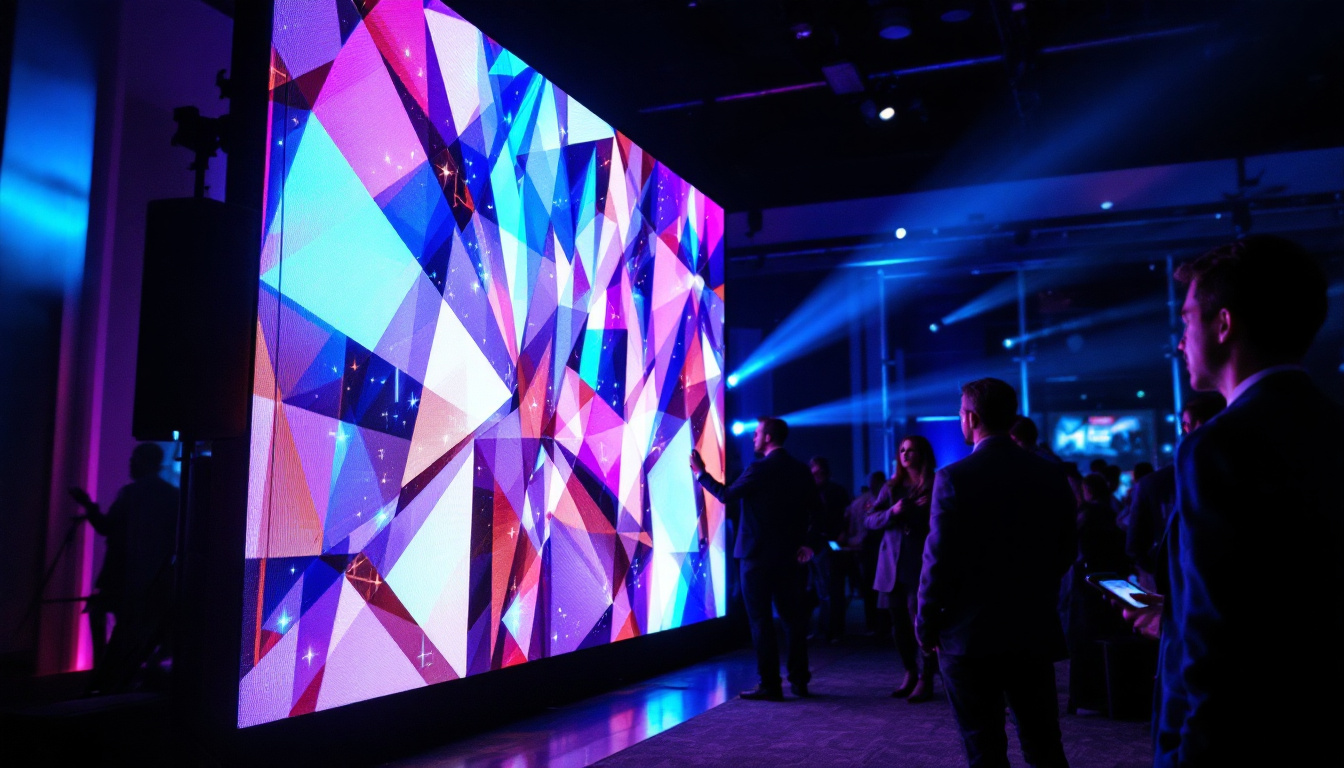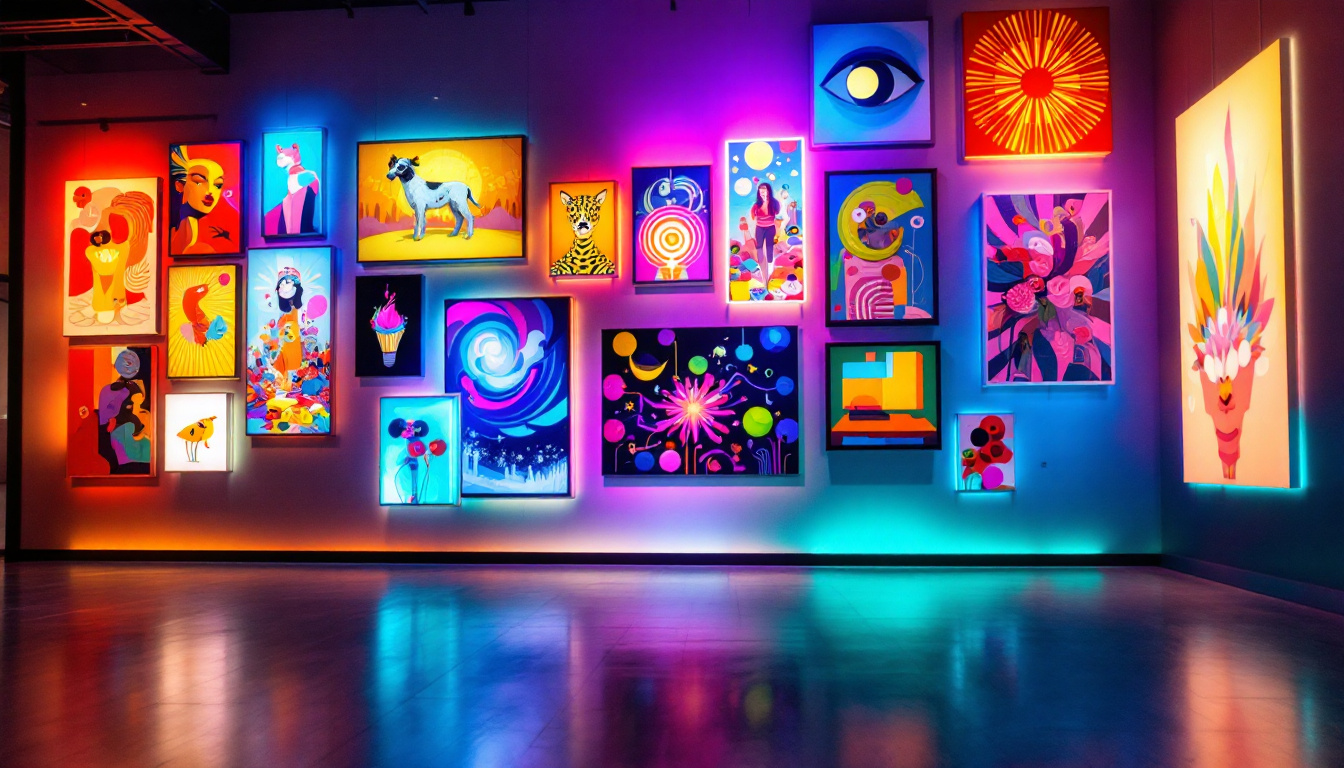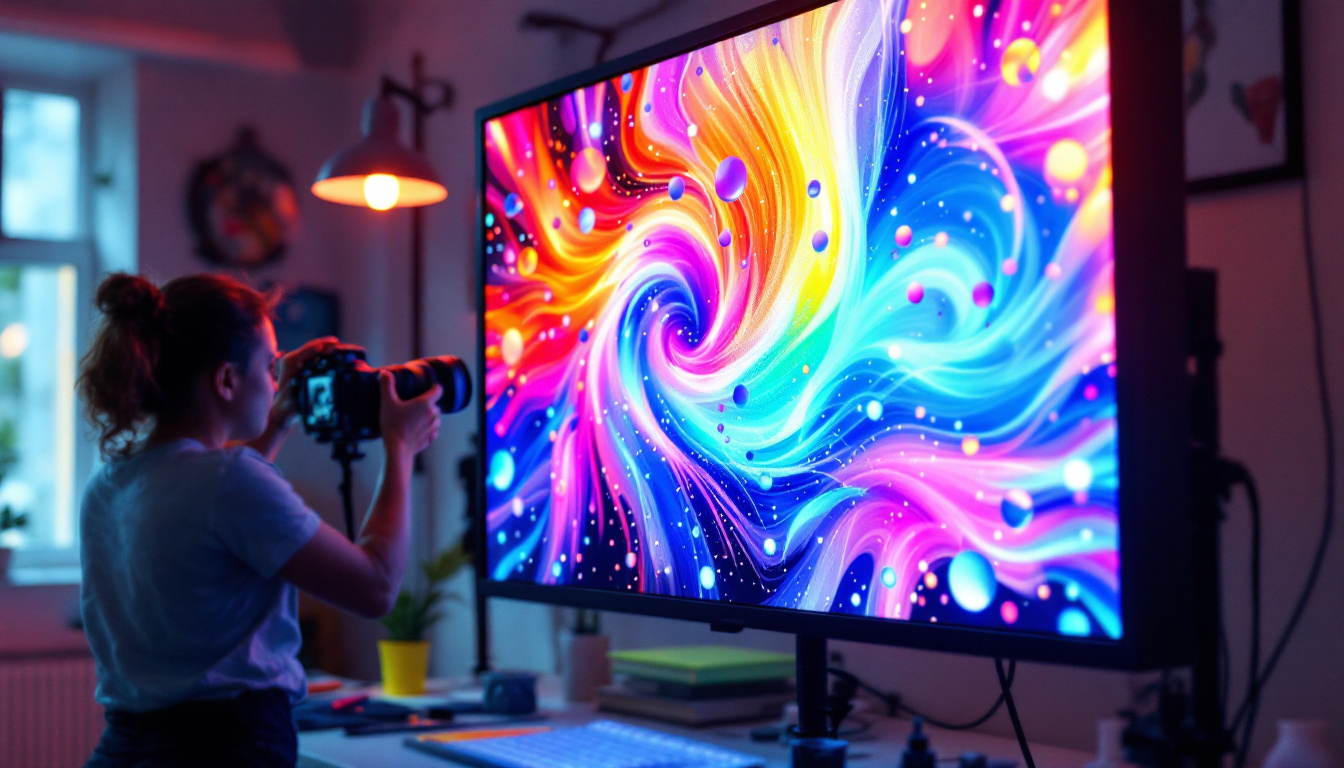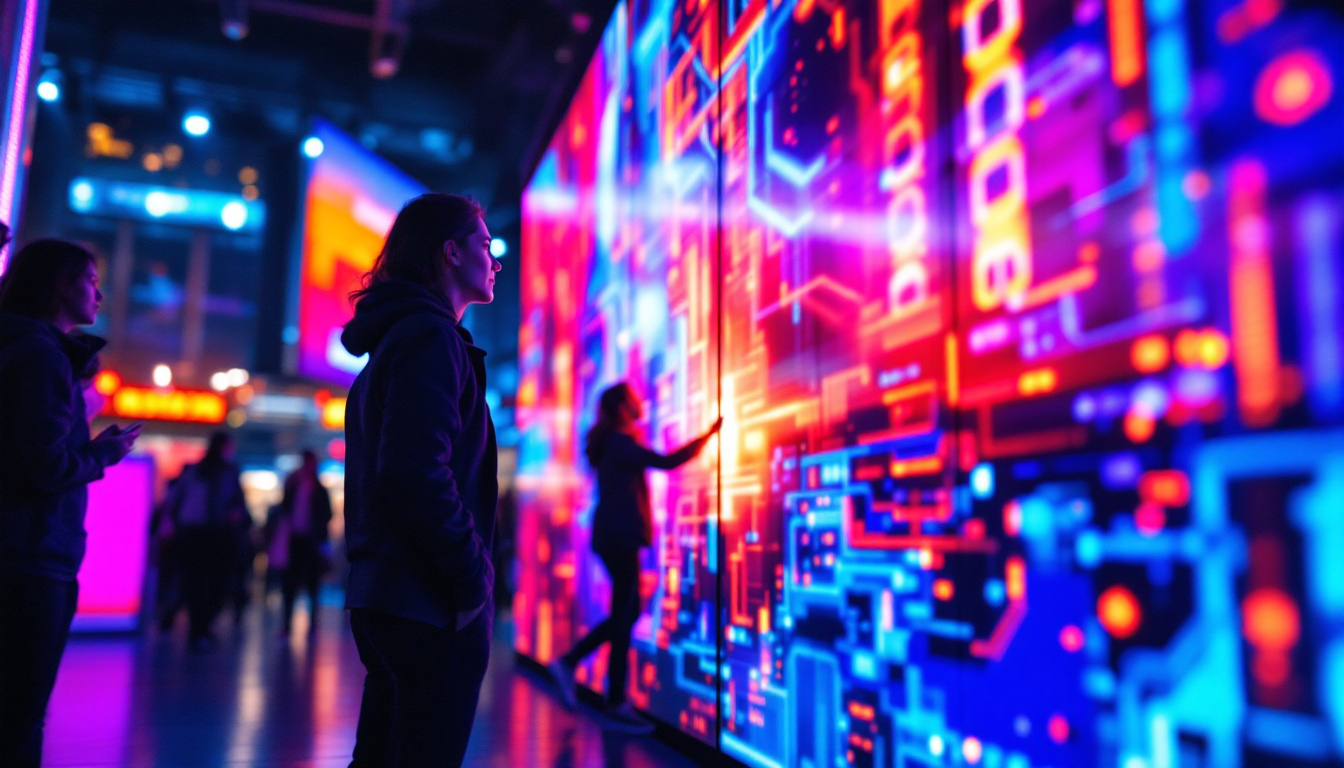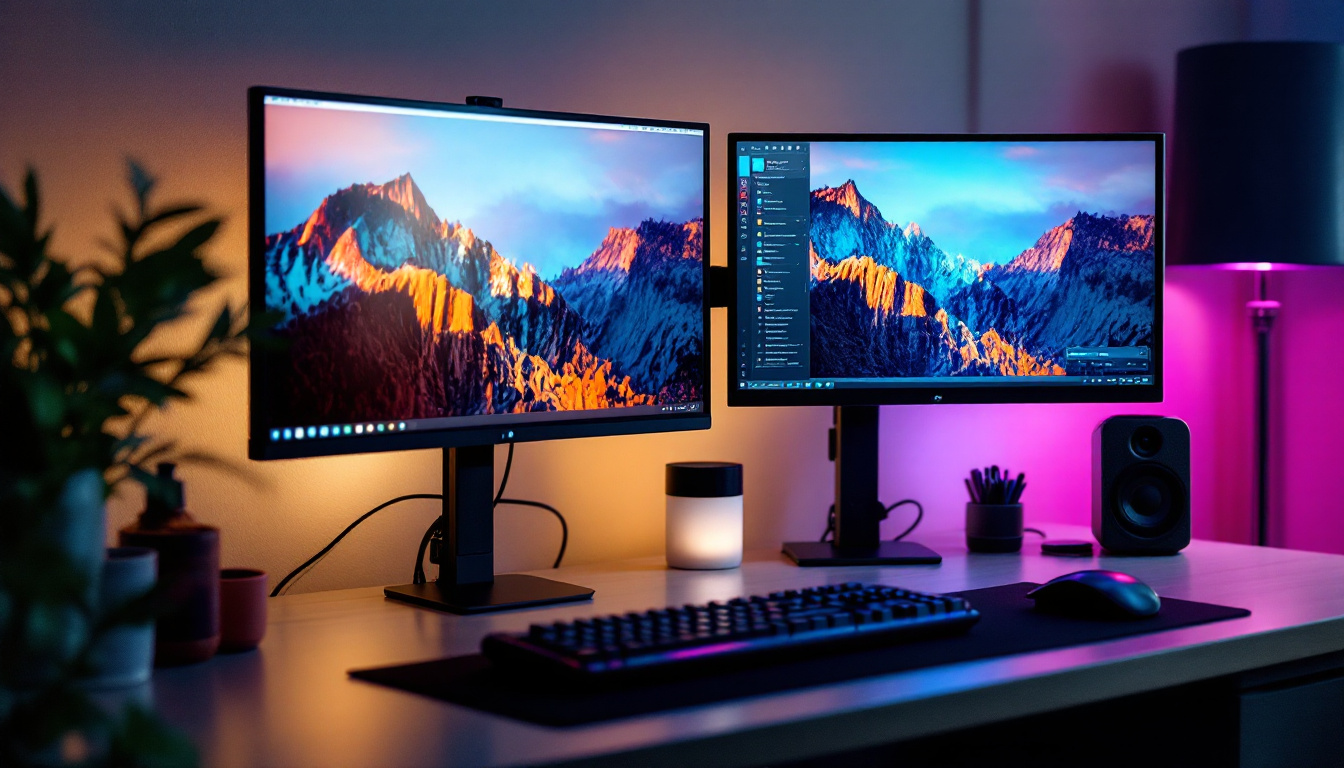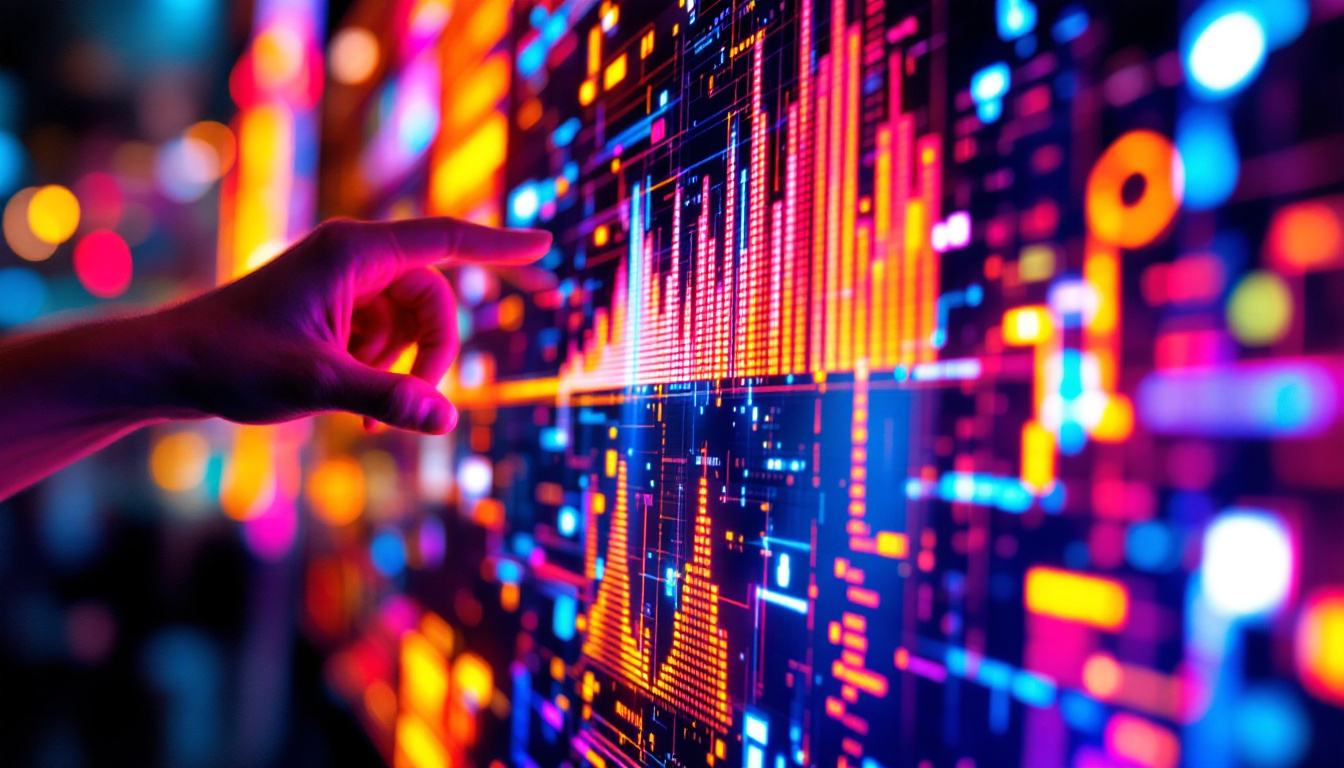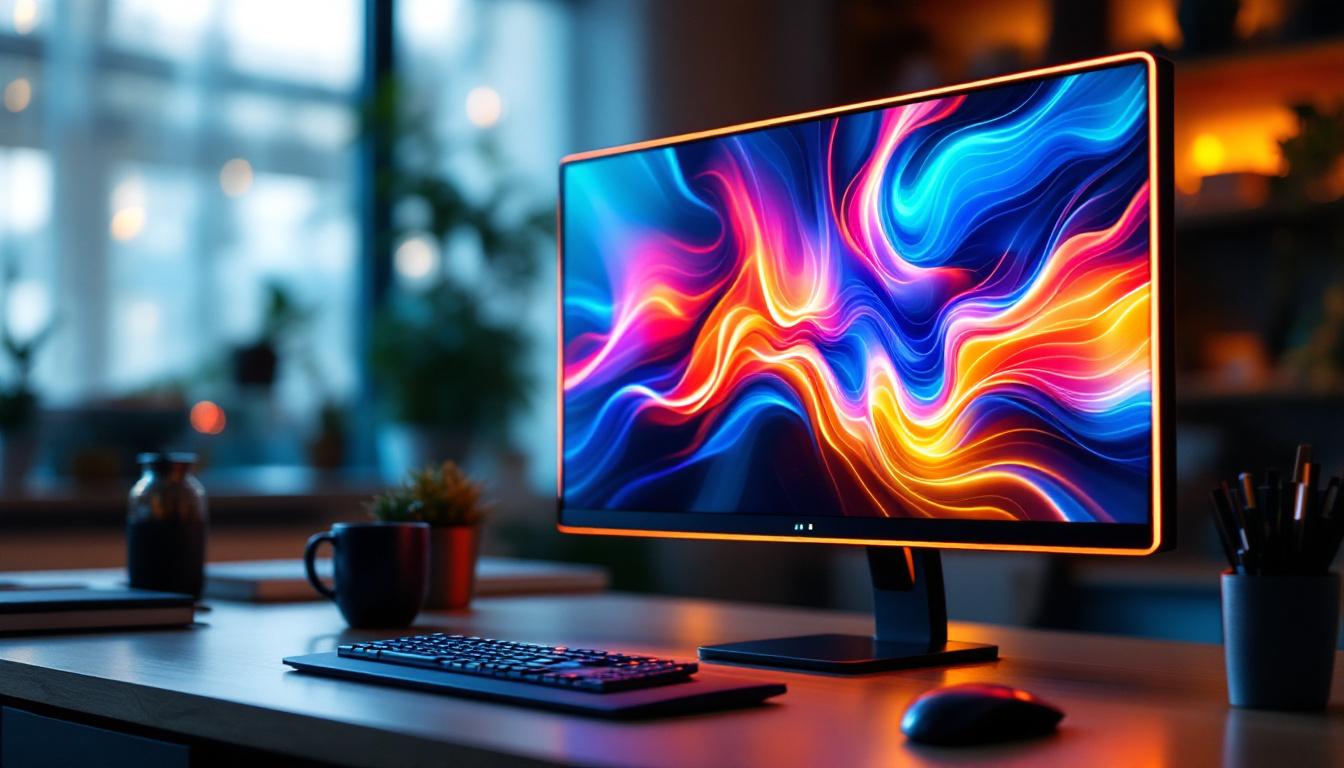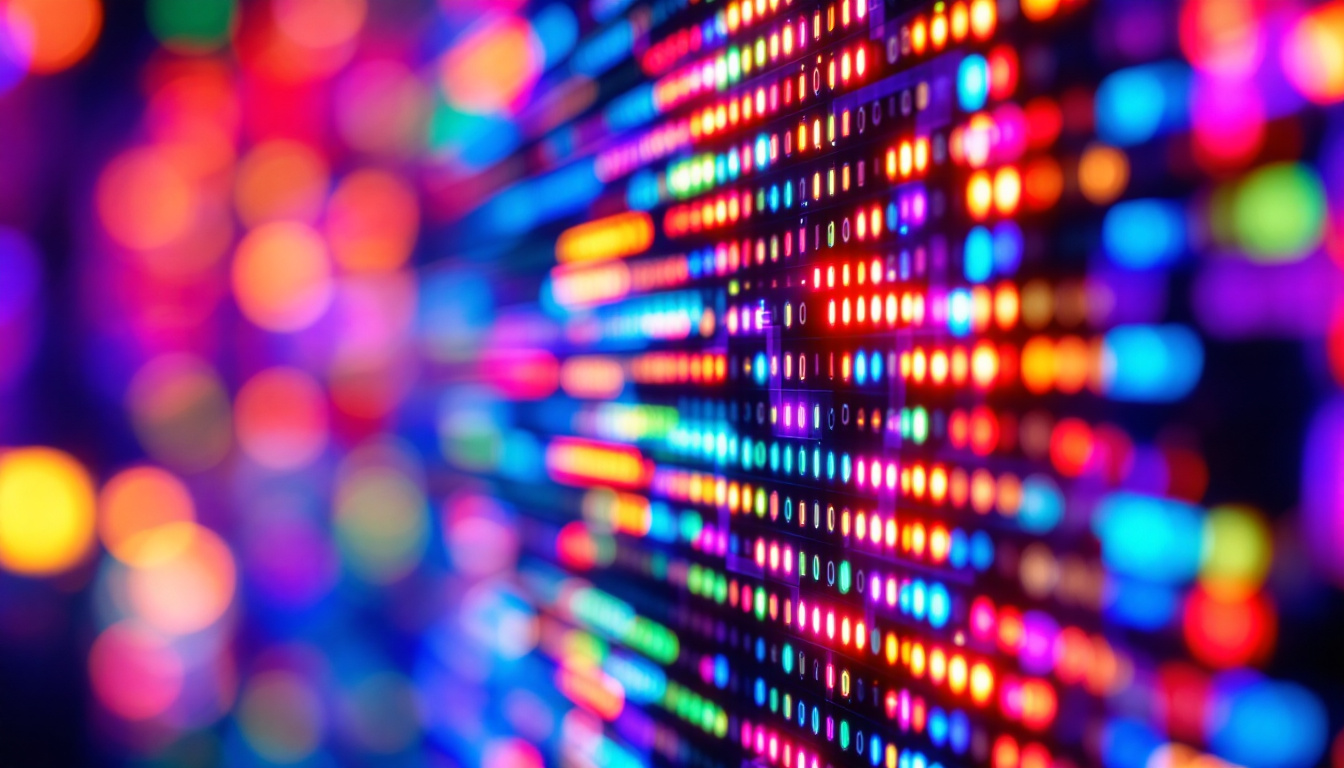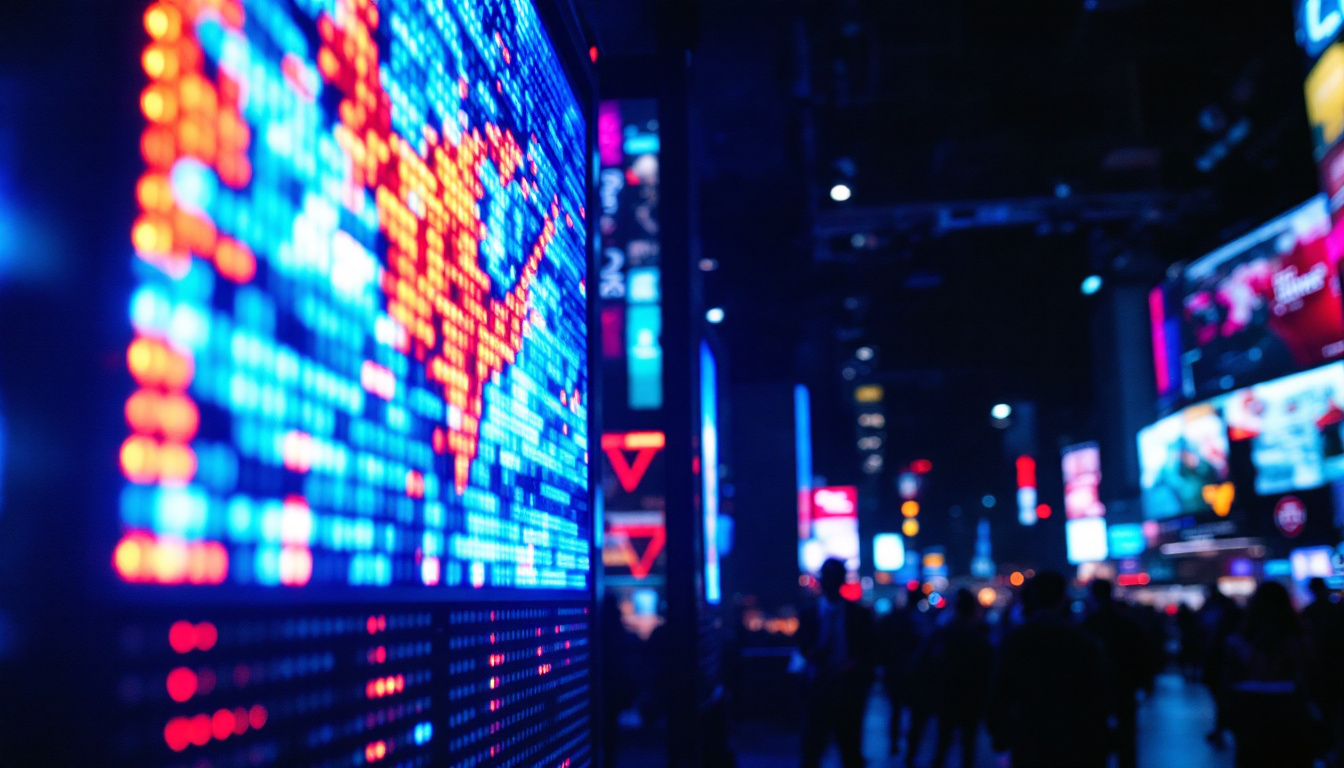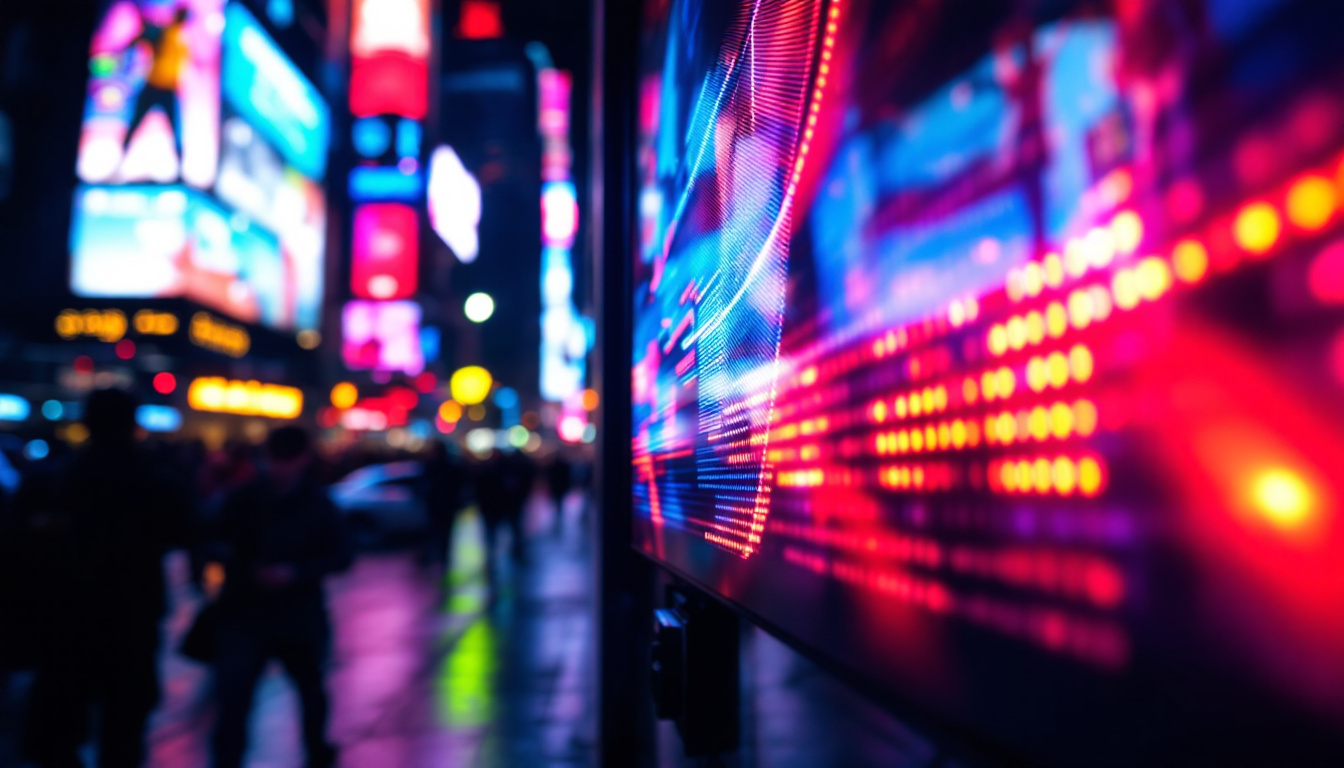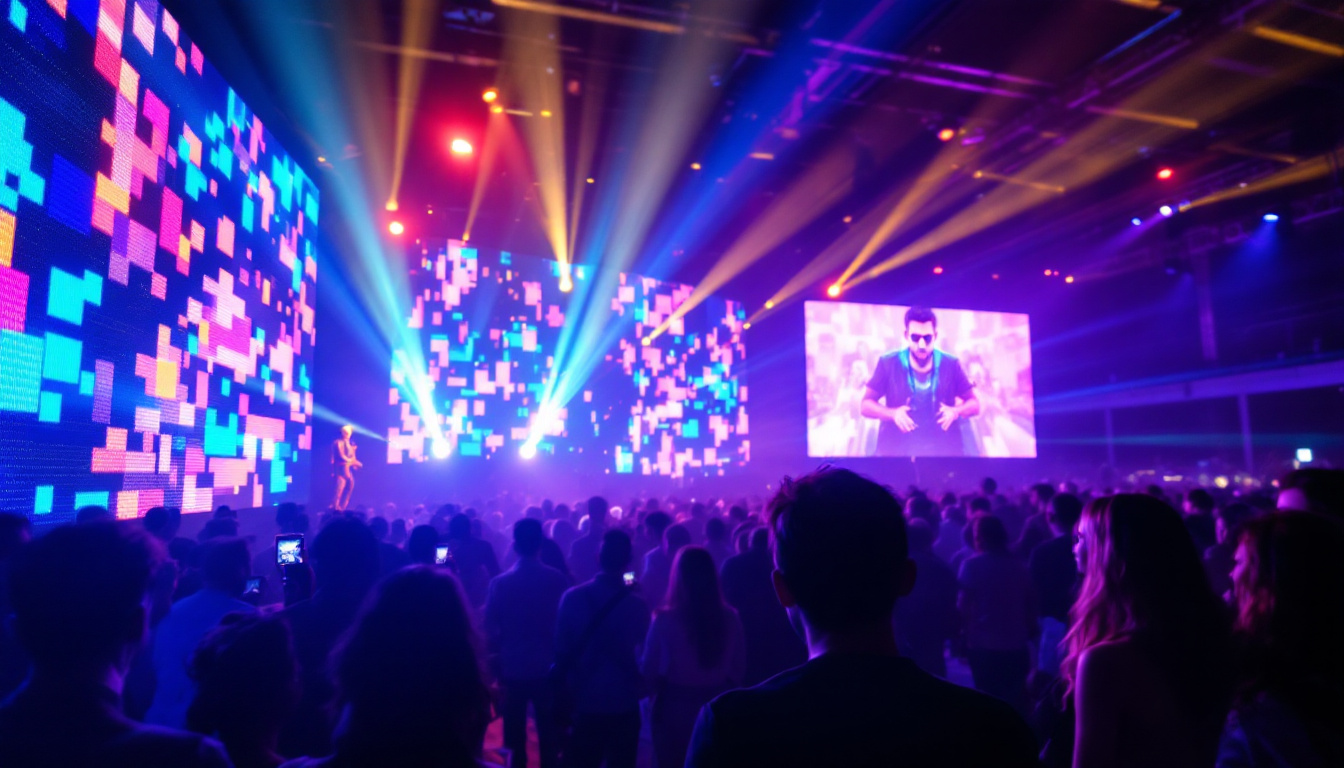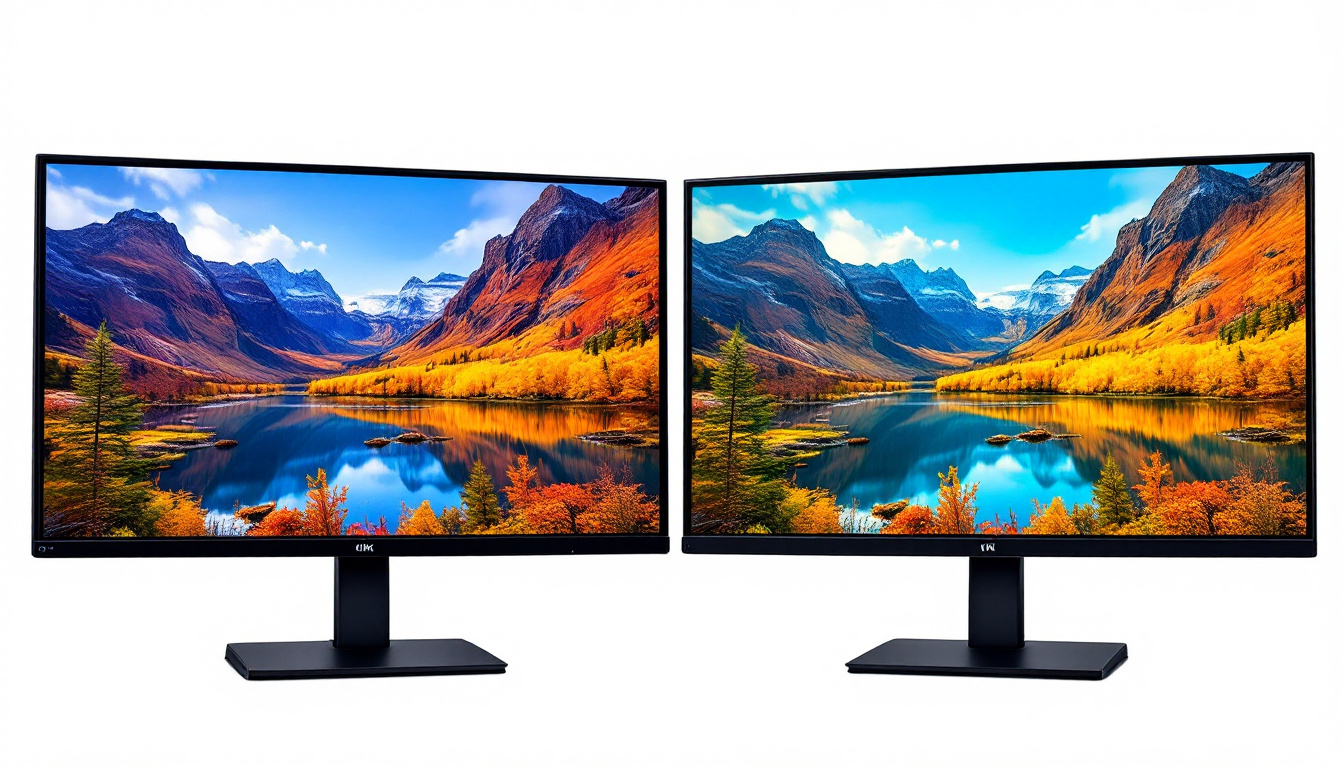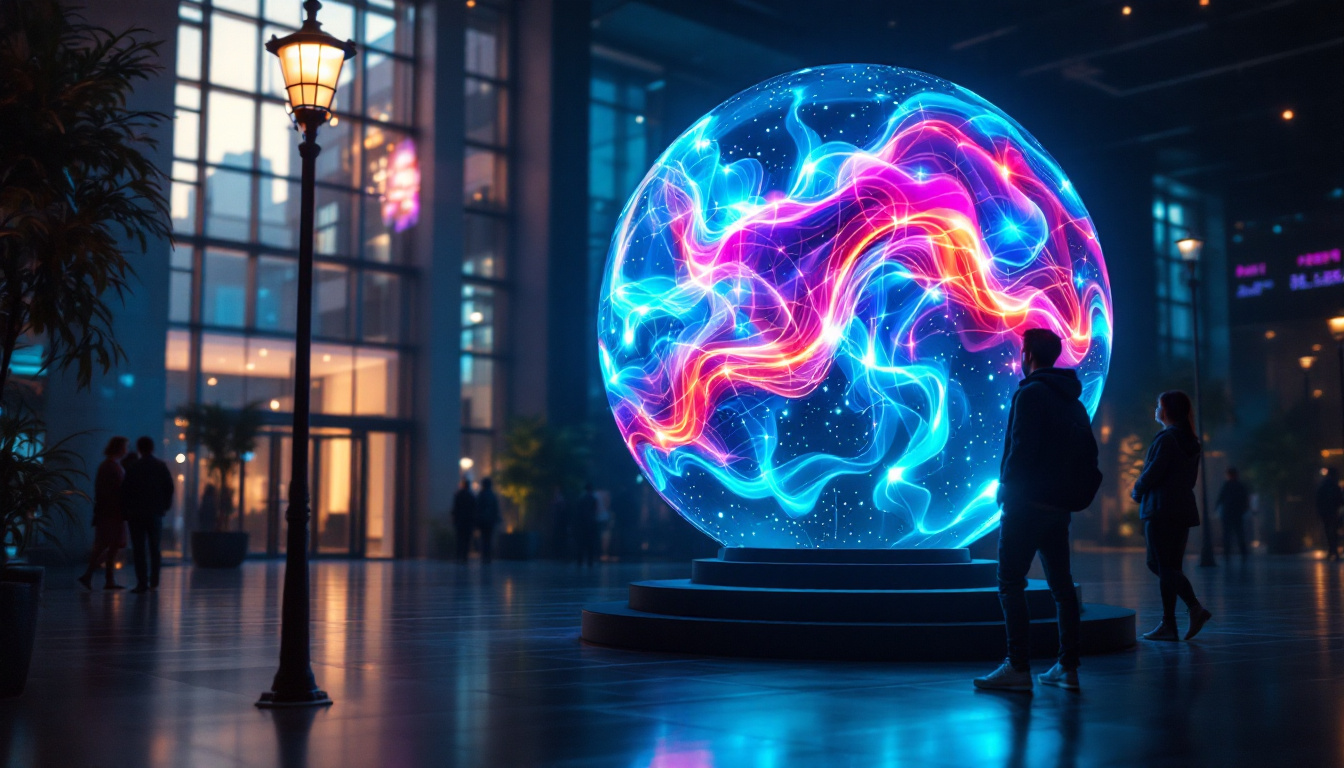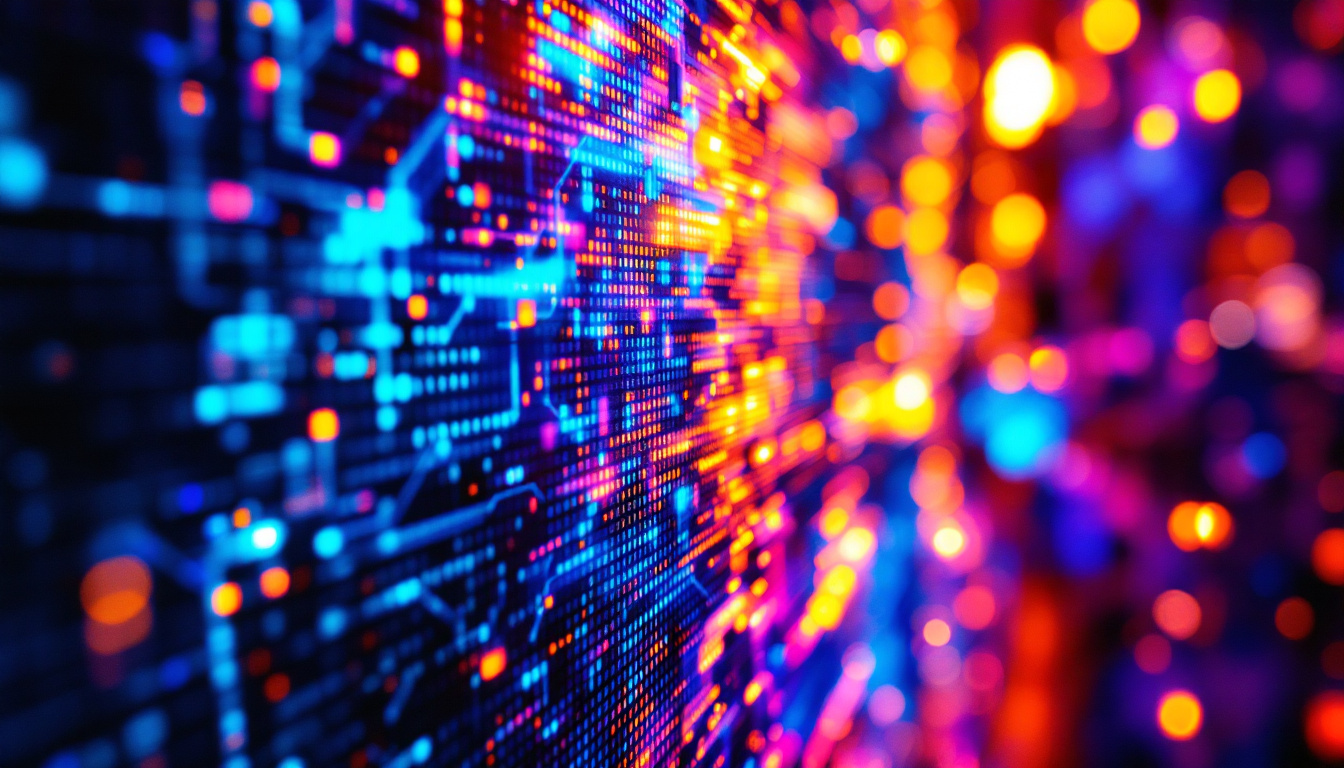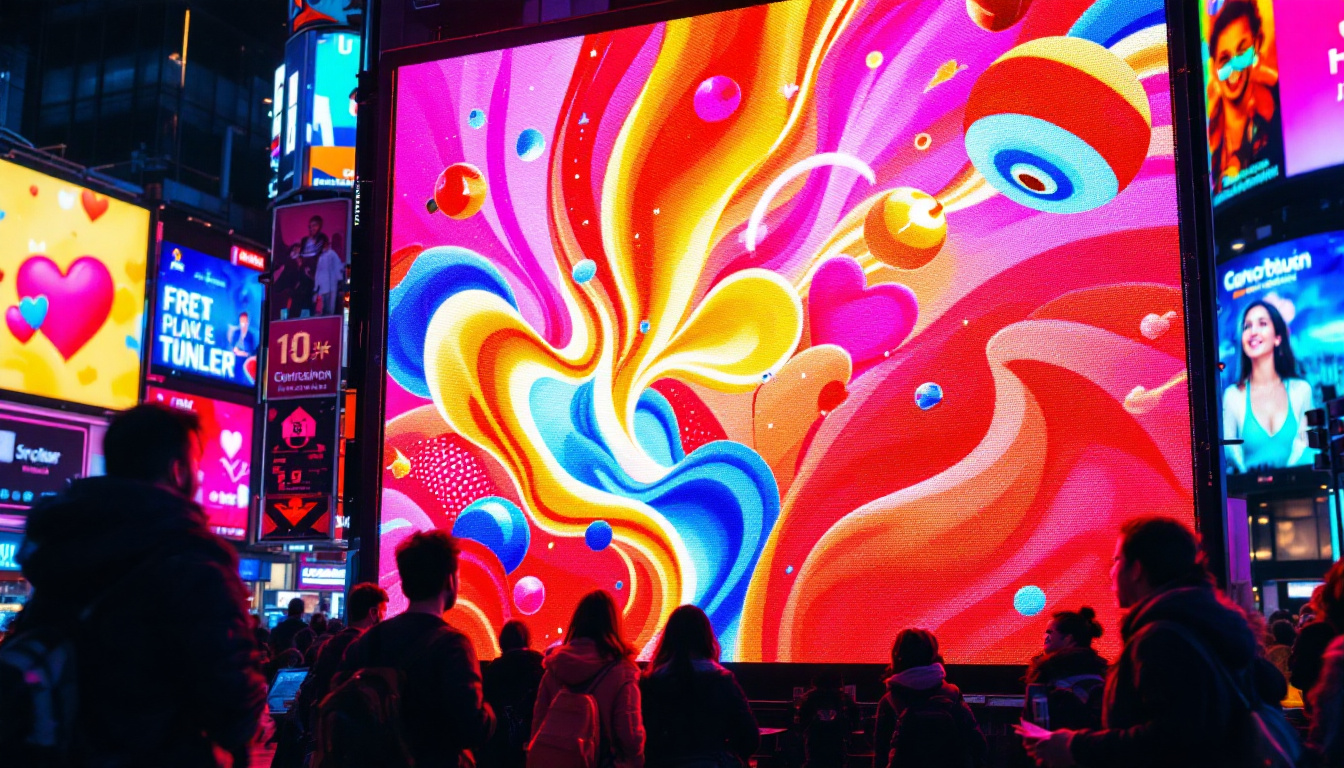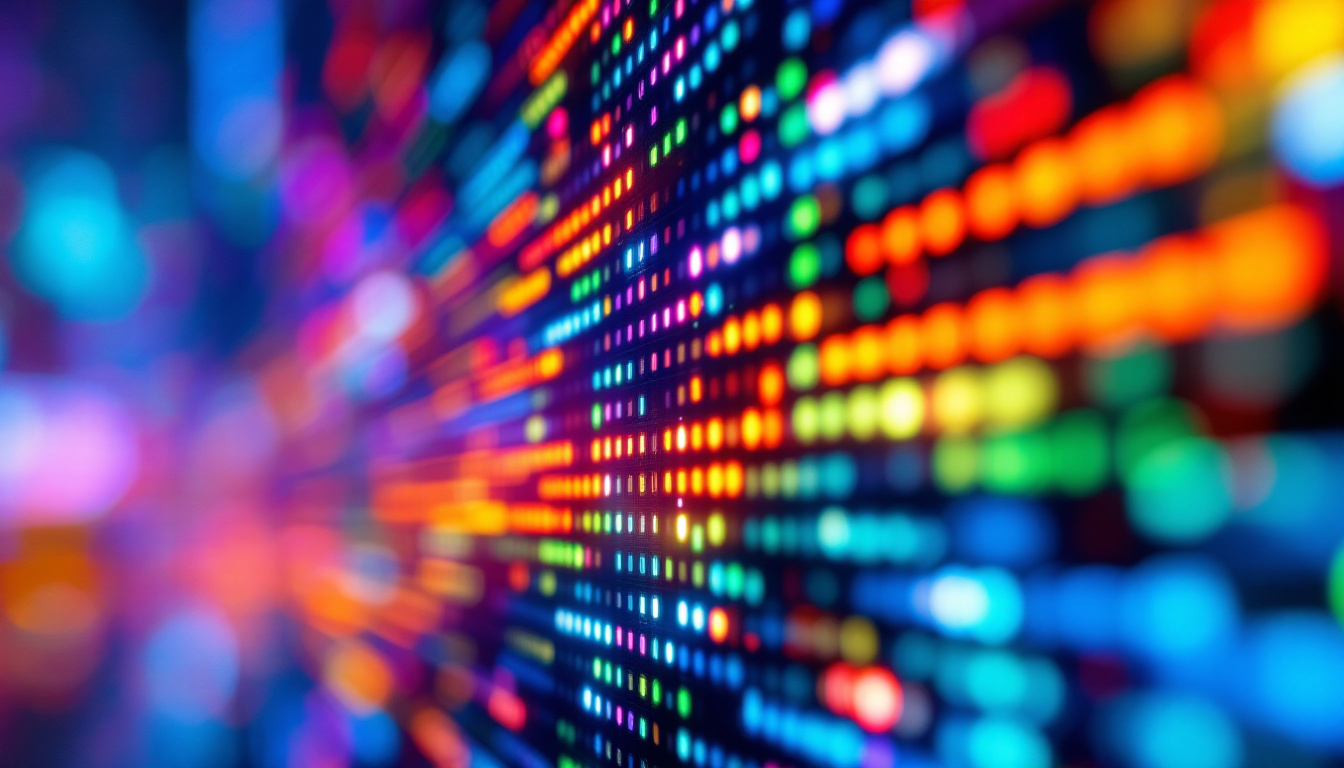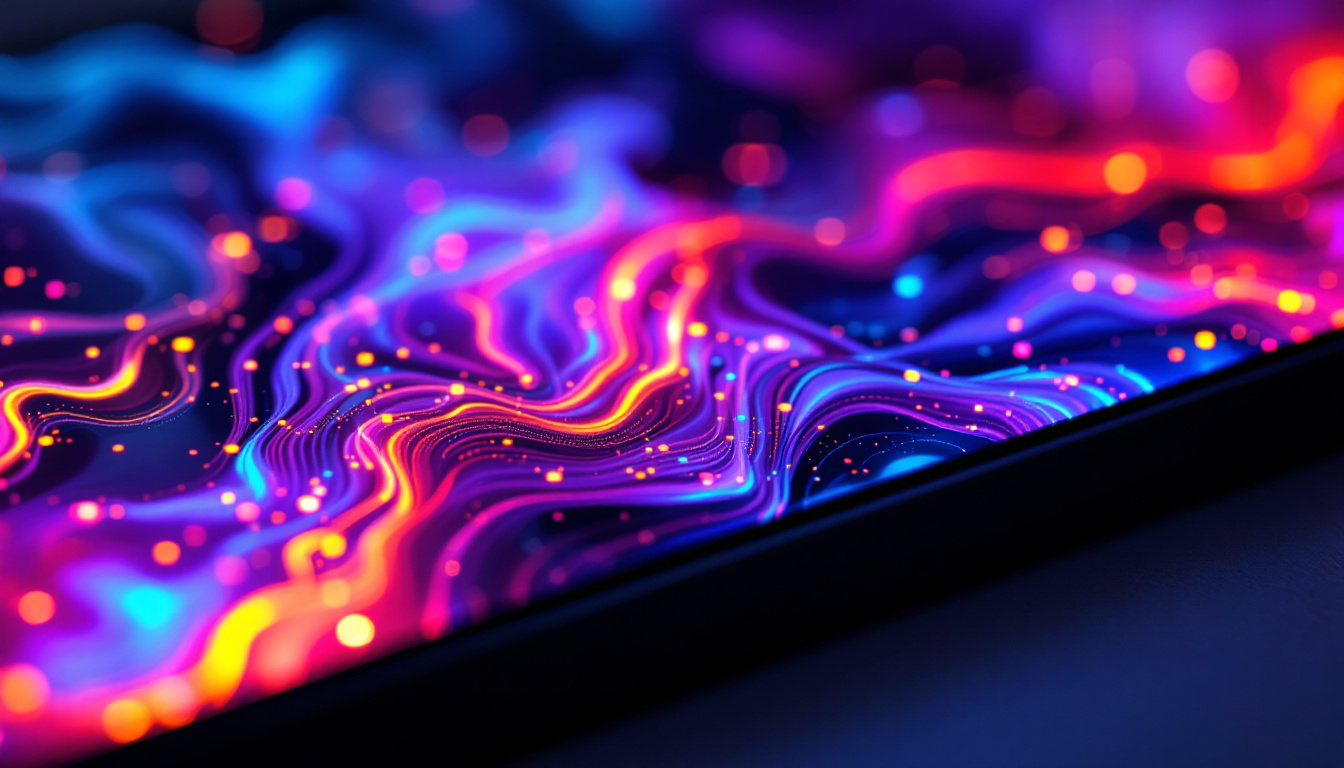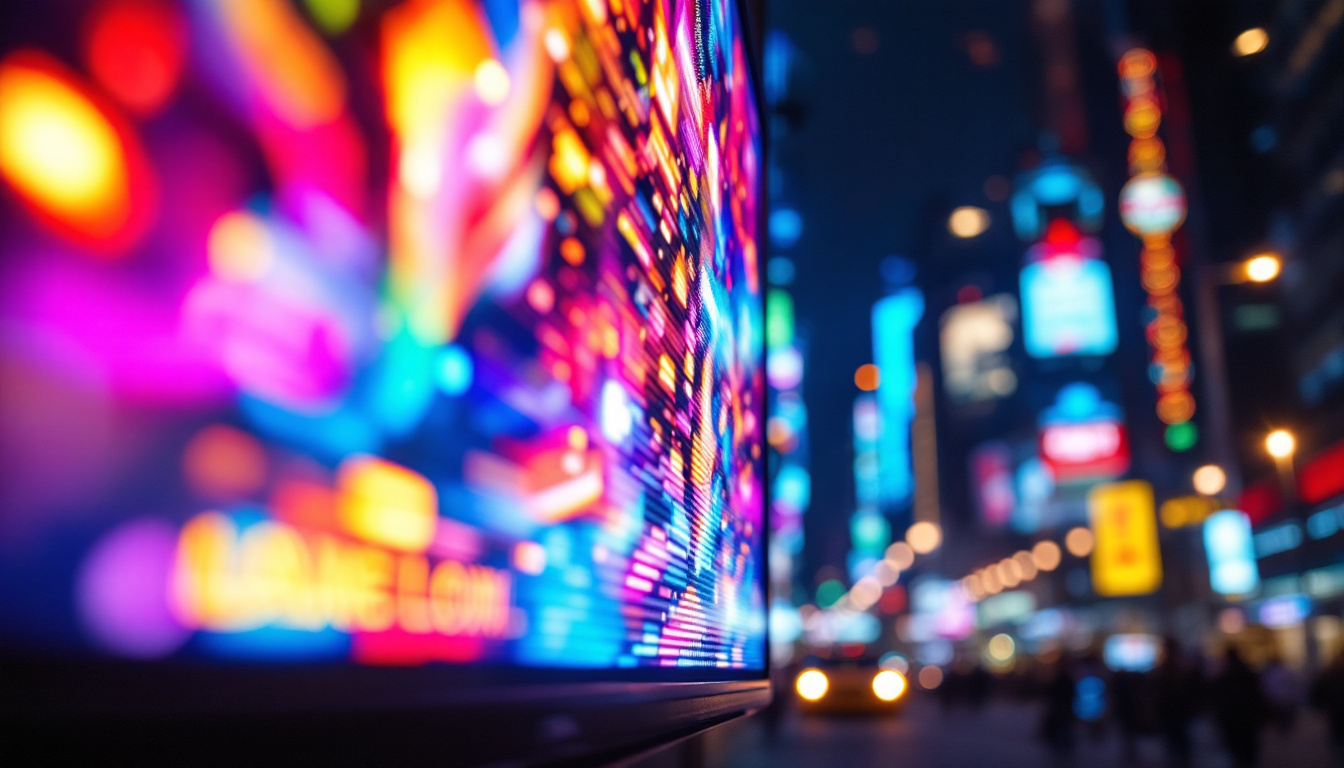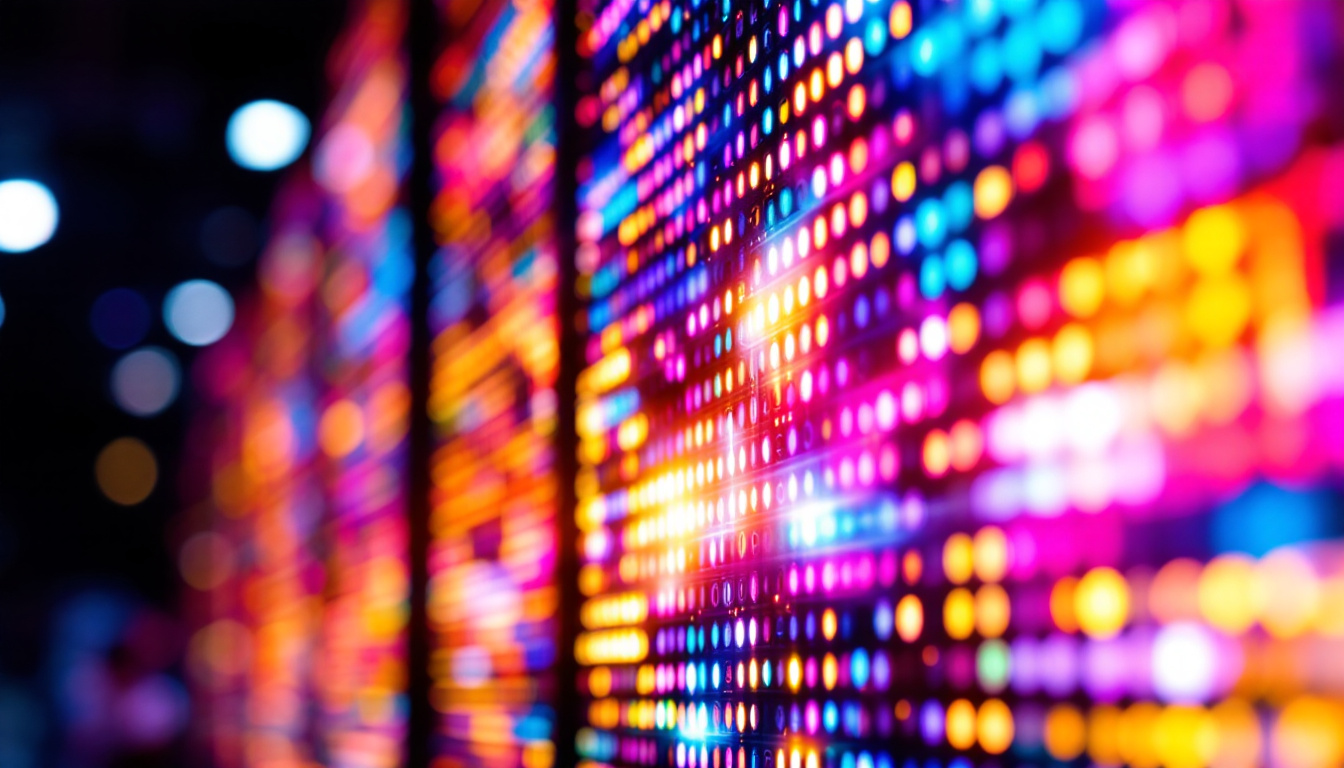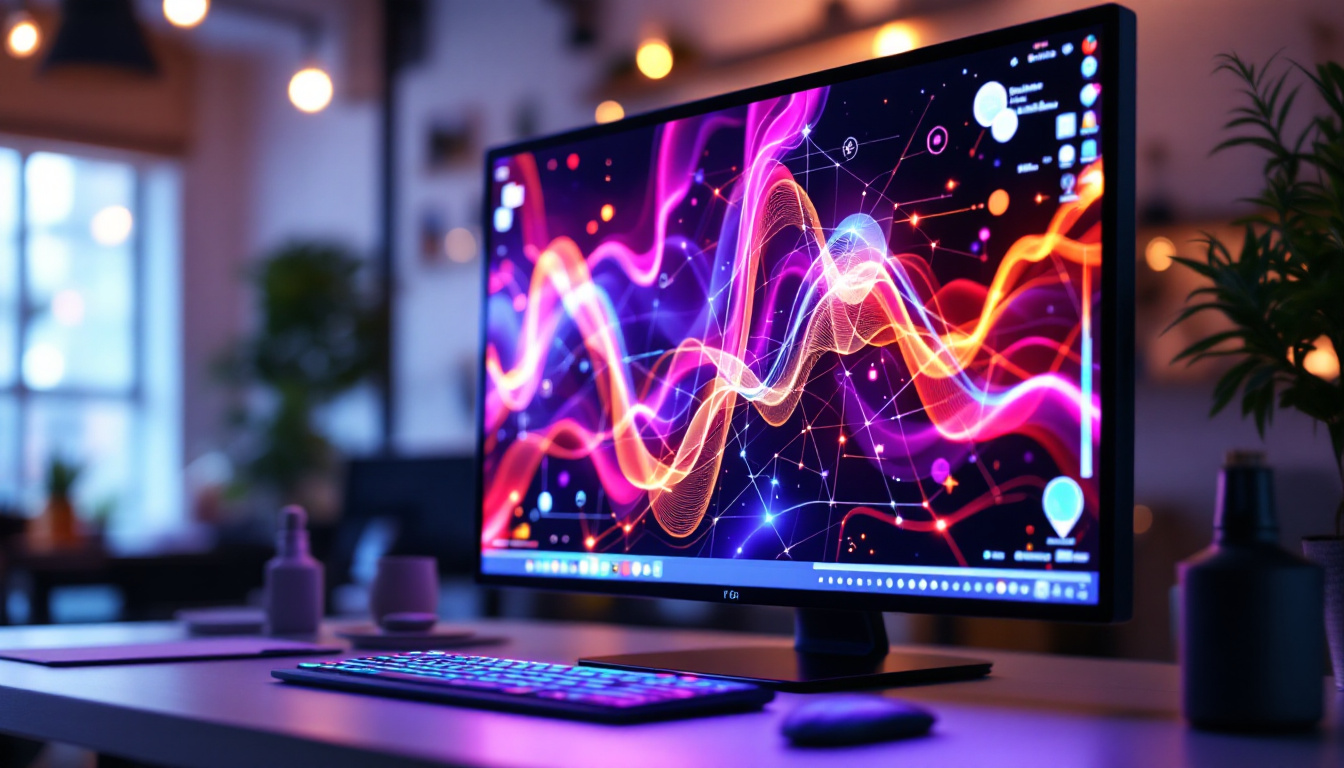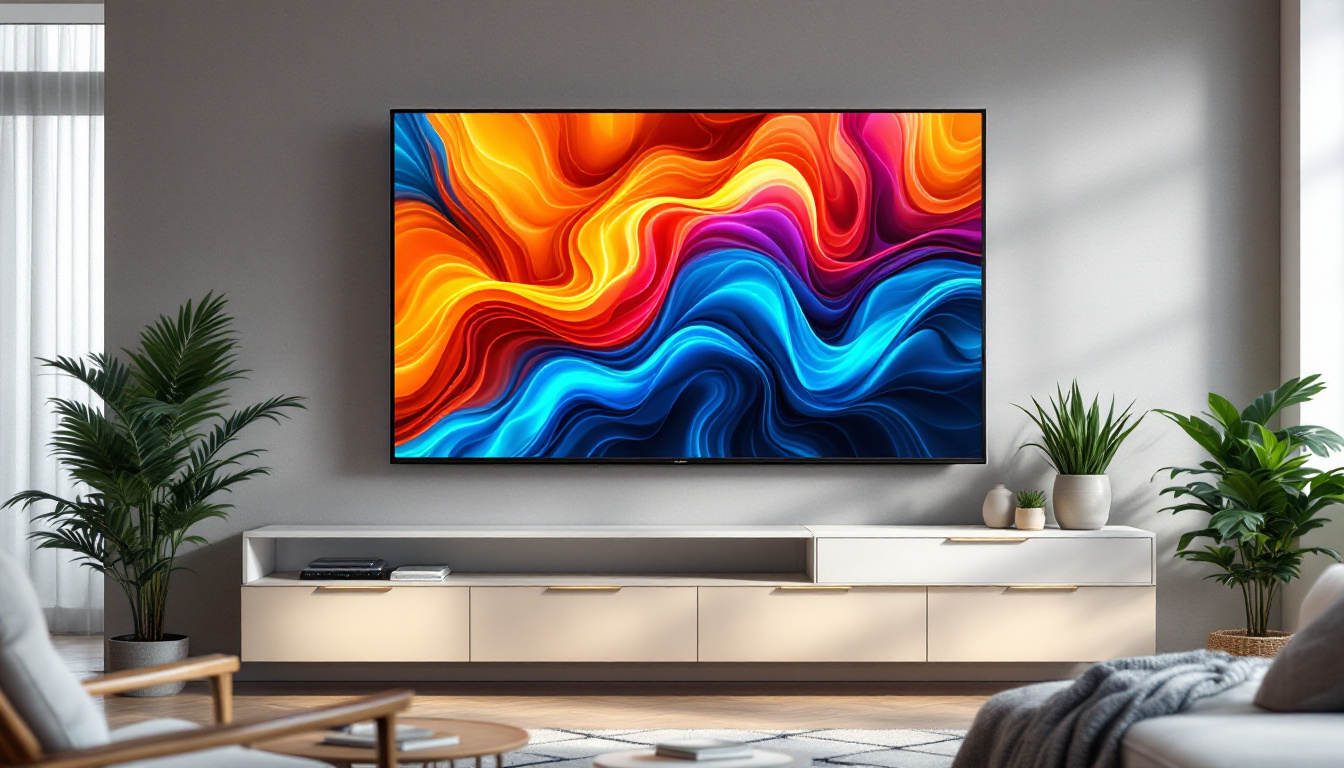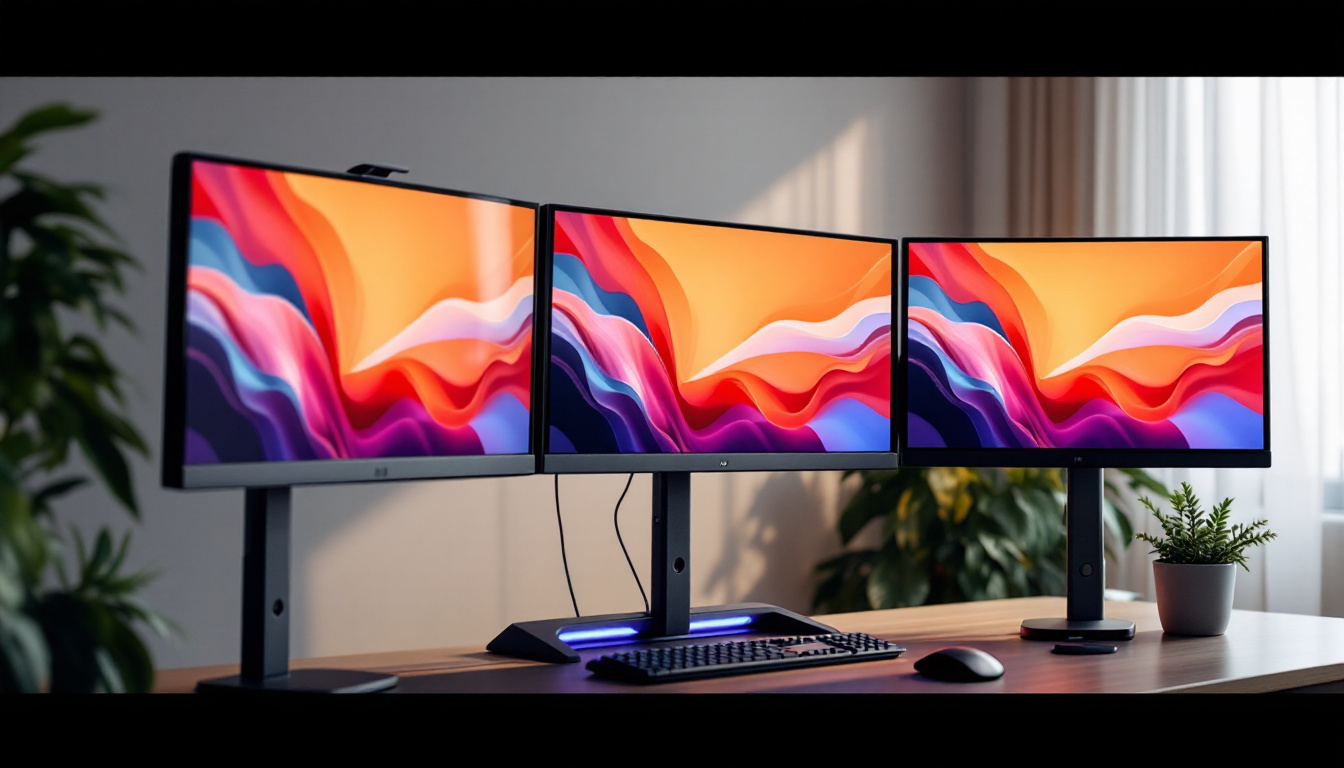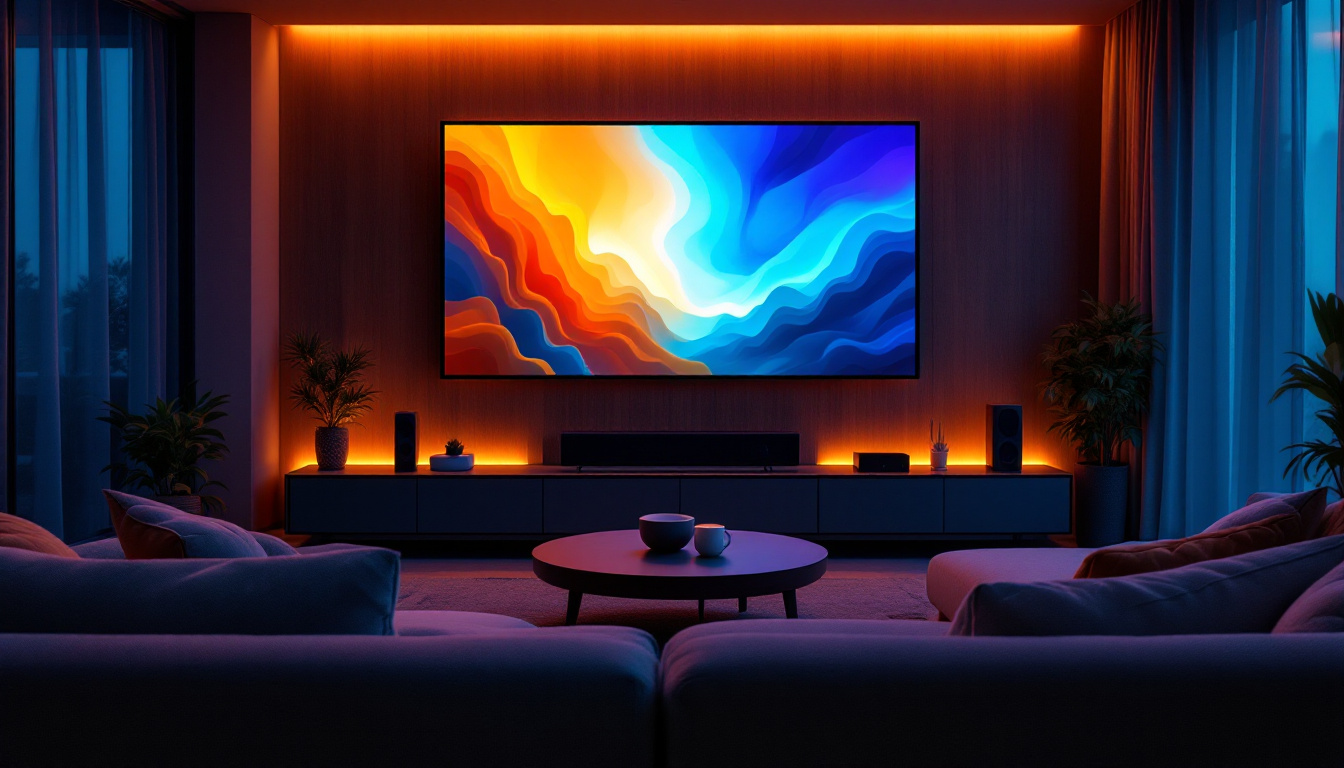In the world of modern technology, LED displays have revolutionized the way information is conveyed and consumed. From large-scale advertising billboards to intricate video walls in corporate settings, LED walls have become an essential component of visual communication. This article delves into the intricacies of LED displays, exploring their functionality, applications, and the technology that powers them.
Understanding LED Technology
LED, or Light Emitting Diode, technology has transformed the landscape of visual displays. Unlike traditional display technologies, LEDs emit light when an electric current passes through them, resulting in vibrant colors and high brightness levels. This section will explore the fundamental aspects of LED technology.
How LEDs Work
At the core of LED technology is the semiconductor material used in the diodes. When electricity flows through the semiconductor, it excites the atoms, causing them to release energy in the form of light. This process is highly efficient, allowing for lower energy consumption compared to conventional lighting methods. The efficiency of LEDs not only reduces electricity bills but also contributes to a smaller carbon footprint, making them an environmentally friendly choice for both consumers and businesses.
LEDs can be combined in various configurations to create different colors. By adjusting the intensity of red, green, and blue (RGB) LEDs, a wide spectrum of colors can be produced. This RGB color mixing is fundamental to the operation of LED walls, enabling them to display rich and dynamic images. Furthermore, advancements in technology have led to the development of tunable white LEDs, which can adjust their color temperature, providing a range of lighting options from warm to cool tones. This versatility makes LEDs suitable for a variety of settings, from cozy home environments to high-energy commercial spaces.
Types of LED Displays
LED displays come in various types, each suited for specific applications. The most common types include:
- Direct View LED: These displays consist of individual LED modules that can be arranged to form large screens. They are popular for outdoor advertising and large venues.
- LED Backlit LCD: These displays use LEDs to illuminate an LCD panel, providing improved brightness and contrast compared to traditional backlighting methods.
- MicroLED: A newer technology that utilizes tiny LEDs to create high-resolution displays. MicroLEDs offer superior color accuracy and energy efficiency.
In addition to these common types, there are also specialized LED displays designed for specific uses. For instance, transparent LED displays are gaining popularity in retail environments, allowing products behind the screen to remain visible while still delivering vibrant advertisements. Similarly, flexible LED displays can be bent or shaped to fit unconventional spaces, opening up new possibilities for creative installations. These innovations highlight the adaptability of LED technology, making it a preferred choice across various industries, from entertainment to architecture.
Moreover, the integration of smart technology with LED displays has revolutionized how information is conveyed. Smart LED displays can connect to the internet, allowing for real-time updates and interactive content. This capability is particularly beneficial for digital signage in public spaces, where timely information can enhance user experience. As LED technology continues to evolve, we can expect even more innovative applications that will further enhance visual communication in our daily lives.
Applications of LED Walls
LED walls have found applications across various industries, owing to their versatility and effectiveness. From entertainment to corporate environments, these displays serve multiple purposes.
Advertising and Marketing
One of the most prominent uses of LED walls is in advertising. Large-scale LED billboards capture the attention of passersby with vibrant colors and dynamic content. Brands leverage this technology to create eye-catching advertisements that can be updated in real-time, allowing for targeted marketing campaigns.
In shopping malls and retail environments, LED walls enhance customer engagement. Interactive displays can showcase promotions, new products, and even customer testimonials, creating a more immersive shopping experience.
Events and Entertainment
In the realm of entertainment, LED walls have become a staple at concerts, festivals, and sporting events. They provide a backdrop for performances, displaying visuals that enhance the overall experience for attendees. The ability to create stunning visuals in real-time allows event organizers to captivate audiences like never before.
Moreover, LED walls are utilized in live broadcasts, providing clear visuals for viewers at home. The high brightness and contrast levels ensure that the content remains visible even in bright outdoor settings.
Corporate and Educational Use
In corporate settings, LED walls serve as powerful communication tools. They can be used for presentations, video conferencing, and information displays in lobbies. Their ability to present information clearly and engagingly makes them ideal for conveying complex data and enhancing team collaboration.
Educational institutions also benefit from LED walls. Classrooms equipped with LED displays can facilitate interactive learning experiences, making lessons more engaging for students. The versatility of these displays allows for various teaching methods, from presentations to live demonstrations.
Benefits of LED Walls
The advantages of LED walls are numerous, contributing to their widespread adoption across different sectors. Understanding these benefits can help organizations make informed decisions about their visual display needs.
Energy Efficiency
One of the most significant benefits of LED technology is its energy efficiency. LED walls consume significantly less power than traditional display technologies, such as plasma or LCD screens. This not only reduces operational costs but also aligns with sustainability goals by minimizing environmental impact.
Furthermore, the longevity of LED displays means that they require less frequent replacement, further contributing to energy savings over time. This durability makes them a cost-effective investment for businesses and organizations.
High Brightness and Visibility
LED walls are renowned for their high brightness levels, making them suitable for both indoor and outdoor applications. Their ability to maintain visibility in bright sunlight is a crucial factor for outdoor advertising and events. The vibrant colors produced by LED technology ensure that content remains eye-catching and engaging, regardless of the viewing conditions.
This high visibility is complemented by excellent contrast ratios, allowing for sharp and clear images. Whether displaying text, graphics, or video, LED walls deliver impressive visual quality that enhances the viewer’s experience.
Flexibility and Scalability
LED walls offer remarkable flexibility in terms of size and configuration. They can be customized to fit various spaces, from small conference rooms to expansive outdoor arenas. This adaptability makes them suitable for a wide range of applications, allowing organizations to tailor their displays to meet specific needs.
Additionally, LED walls can be easily scaled. As an organization’s needs grow, they can expand their display capabilities by adding more modules or upgrading existing ones. This scalability ensures that businesses can invest in technology that evolves with them.
Challenges and Considerations
While LED walls offer numerous advantages, there are also challenges and considerations that organizations should keep in mind when implementing this technology. Understanding these factors can help in making informed decisions.
Initial Costs
The initial investment for LED walls can be significant. The cost of high-quality LED modules, installation, and necessary infrastructure can add up quickly. Organizations must weigh the long-term benefits against the upfront expenses to determine if LED technology aligns with their budget and goals.
However, it is essential to consider the total cost of ownership, which includes energy savings, maintenance, and longevity. Over time, the operational savings can offset the initial investment, making LED walls a financially viable option.
Maintenance and Technical Expertise
Although LED walls are generally durable, they still require regular maintenance to ensure optimal performance. Dust and dirt can accumulate on the surface, affecting image quality. Additionally, technical expertise may be needed for installation and troubleshooting, which can pose challenges for organizations without in-house technical staff.
To mitigate these issues, organizations should consider establishing a maintenance plan and training staff on basic troubleshooting techniques. Partnering with experienced vendors can also provide valuable support in managing LED wall technology.
The Future of LED Displays
The future of LED displays looks promising, with ongoing advancements in technology and applications. As the demand for high-quality visual communication continues to grow, innovations in LED technology are expected to enhance performance and expand possibilities.
Emerging Technologies
New developments in LED technology, such as MicroLED and MiniLED, are pushing the boundaries of display capabilities. These technologies offer higher resolutions, improved color accuracy, and even greater energy efficiency. As they become more widely adopted, they will likely redefine the standards for visual displays.
Additionally, the integration of artificial intelligence and machine learning into LED display systems is on the rise. These advancements can enable more dynamic content management, allowing for personalized and targeted messaging that resonates with viewers.
Integration with Other Technologies
LED displays are increasingly being integrated with other technologies, such as augmented reality (AR) and virtual reality (VR). This convergence opens up new avenues for immersive experiences, transforming how information is presented and consumed.
For instance, in retail environments, AR can be used in conjunction with LED walls to create interactive shopping experiences, where customers can visualize products in their own space. This integration enhances engagement and can drive sales by providing a unique and memorable experience.
Conclusion
LED walls have become an integral part of modern visual communication, offering unparalleled advantages in energy efficiency, brightness, and flexibility. Their applications span various industries, from advertising to education, making them a versatile solution for organizations seeking to enhance their messaging.
While there are challenges to consider, the benefits of LED technology often outweigh the drawbacks. As advancements continue to emerge, the future of LED displays is bright, promising even more innovative applications and improved performance.
In a world where visual communication is paramount, investing in LED walls can provide organizations with a competitive edge, ensuring they capture attention and convey their messages effectively.
Discover LumenMatrix LED Display Solutions
Ready to elevate your visual communication with the latest in LED display technology? Look no further than LumenMatrix, where innovation meets excellence. Our comprehensive range of LED display solutions, from Indoor and Outdoor LED Walls to specialized displays like Vehicle, Sports, and Floor LED, is designed to captivate your audience and amplify your brand’s presence. Embrace the future with our Custom, All-in-One, and Transparent LED Displays, crafted to deliver your message with vibrant clarity. Check out LumenMatrix LED Display Solutions today and transform your space into a dynamic visual experience.


